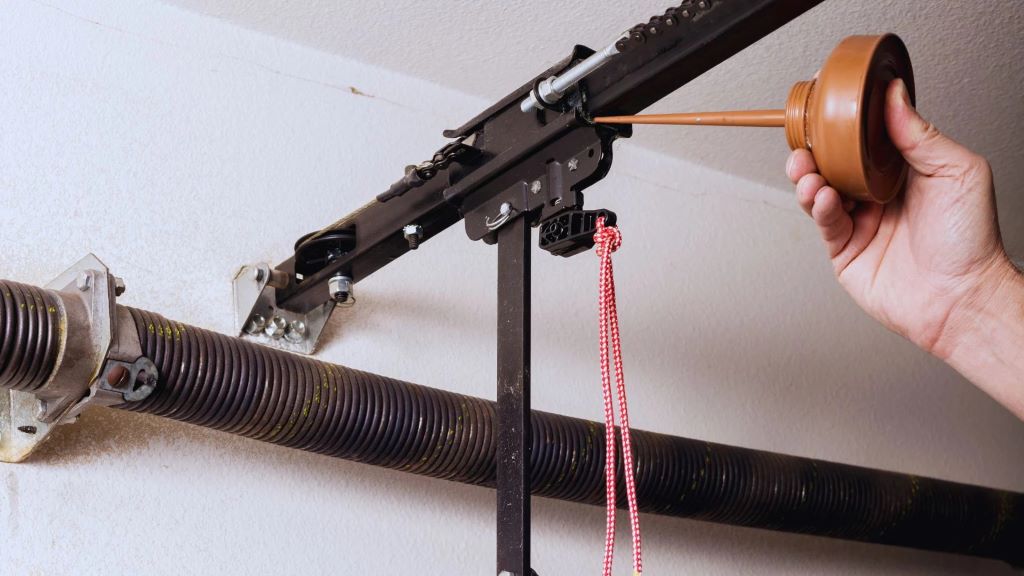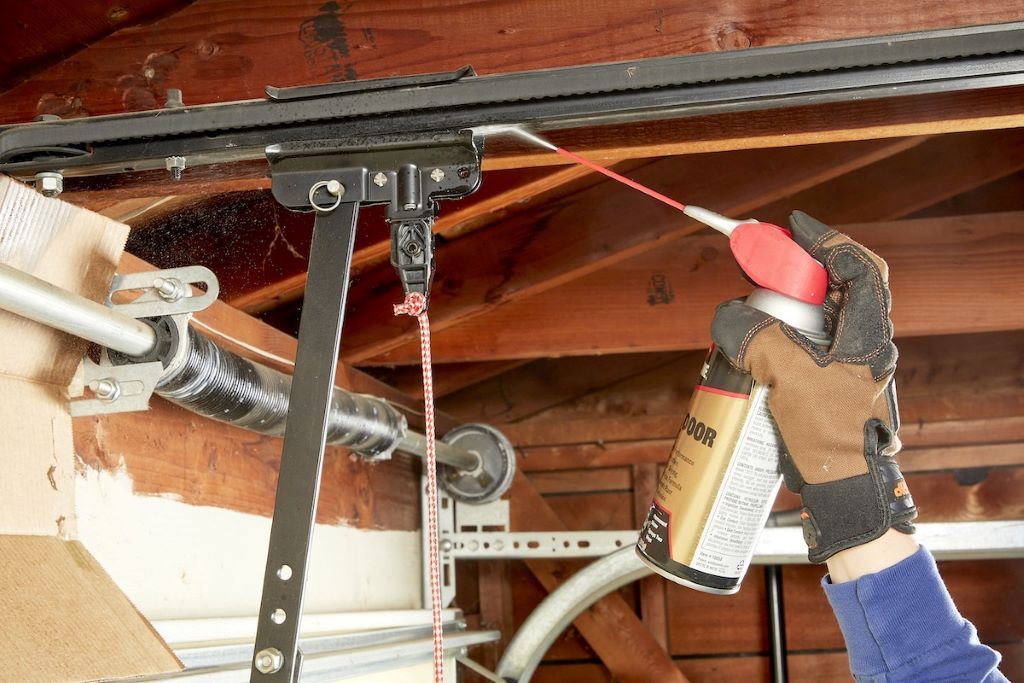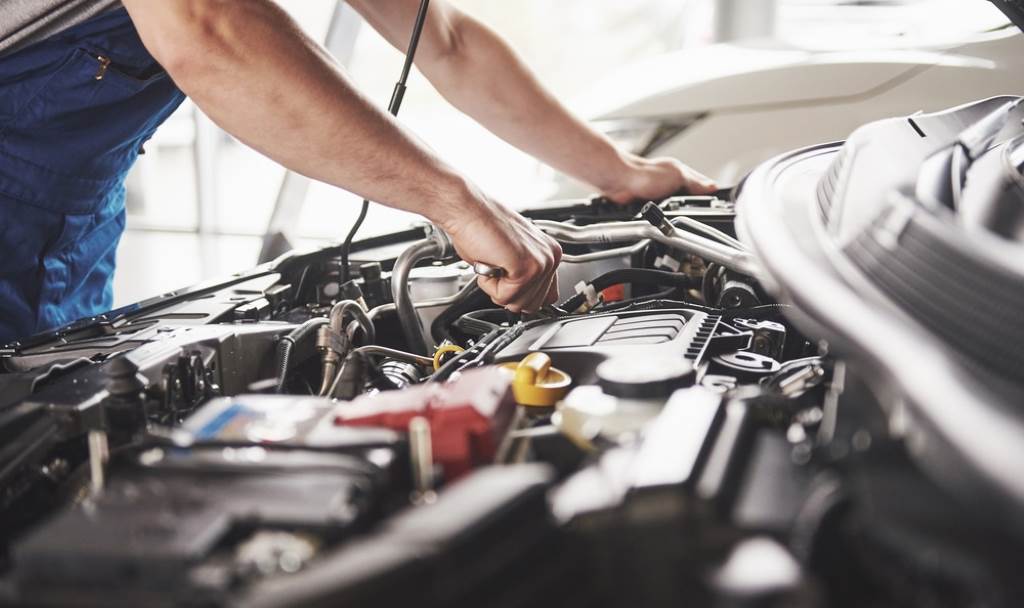The screech of metal against metal pierced through Sarah’s quiet Sunday morning. Her garage door, which had faithfully served her family for eight years, suddenly sounded like a haunted house prop. However, what seemed like a major repair turned into a simple 30-minute maintenance task. Additionally, this experience taught her the importance of regular garage door lubrication. Therefore, understanding how to lubricate moving parts on your garage door can save you hundreds in repair costs while ensuring years of smooth operation.
Understanding Why Regular Garage Door Lubrication Matters Most
Your garage door operates roughly 1,500 times per year according to industry standards. Each cycle puts stress on multiple moving components that require proper lubrication. However, many homeowners overlook this critical maintenance step until problems arise.
The financial impact of neglecting garage door maintenance is significant. Professional garage door maintenance costs range from $100 to $240, with most homeowners paying around $190 for a comprehensive tune-up, while typical repair costs range between $80–275, with the national average cost being $150. Additionally, replacing a garage door entirely averages $2,743 according to current market data.
Therefore, regular lubrication serves as insurance against costly repairs. Proper maintenance extends component life by reducing friction and preventing rust formation. Furthermore, well-maintained garage doors operate more quietly and efficiently.
Identifying All Moving Components That Require Regular Lubrication
Understanding your garage door’s anatomy is crucial before beginning any maintenance routine. Your system contains several key components that demand regular attention.
Primary Moving Parts Include:
- Hinges connecting door panels
- Rollers moving along tracks
- Springs (torsion or extension)
- Bearing plates and brackets
- Lock mechanisms and handles
- Opener chain or belt drive
Hinges connect the individual panels of your garage door, enabling them to flex and move as a single unit. However, these components bear significant weight and stress during operation. Additionally, rollers guide the door along its tracks and require consistent lubrication for smooth movement.
The springs represent the most critical components in your system. Therefore, proper lubrication prevents premature wear and potential dangerous failures. Furthermore, bearing plates support the spring system and require attention to maintain proper alignment.
Choosing the Best Lubricants for Your Specific Garage Door System
Not all lubricants are created equal for garage door applications. White lithium grease or silicone spray are the preferred options for most components. However, understanding which lubricant works best for each part ensures optimal results.
Recommended Lubricant Types:
- White Lithium Grease: Best for hinges, rollers, and lock mechanisms
- Silicone Spray: Ideal for tracks, weather stripping, and light-duty applications
- Penetrating Oil: Excellent for rusted or seized components
Gasoila Free All Rust Eater Deep Penetrating Oil stands out as the best overall choice for garage door lubrication this year, shining in its capability to dissolve rust effectively while penetrating deeply. Additionally, WD-40 Specialist Long-Term Corrosion Inhibitor provides superior lubrication and protection against rust and corrosion for up to one year.
Therefore, investing in quality lubricants saves money long-term. However, avoid using heavy oils or automotive grease, which attract dirt and debris. Furthermore, never use household oils like cooking oil, which can become rancid and damage components.
Complete Step-by-Step Lubrication Process for Maximum Effectiveness
Proper technique ensures thorough coverage without waste or mess. Start by gathering your materials: appropriate lubricants, clean rags, safety glasses, and a stepladder if needed.
Safety First Preparation:
- Disconnect the garage door opener
- Manually operate the door to test balance
- Secure the door in the up position
- Clean all components before lubrication
Begin with the hinges, applying lubricant directly to the hinge pins. Work each hinge several times to distribute the lubricant evenly. However, avoid over-lubrication, which attracts dirt and creates maintenance issues.
Next, address the rollers by applying lubricant to the bearings and axles. Therefore, spin each roller manually to ensure proper distribution. Additionally, check for worn or damaged rollers that may need replacement. Furthermore, lubricate the tracks lightly, focusing on curved sections where rollers experience the most friction.
The spring system requires special attention due to safety concerns. Apply lubricant to spring coils and bearing plates carefully. However, if you’re uncomfortable working near springs, consider professional service. Additionally, lubricate the opener chain or belt according to manufacturer specifications.

Establishing an Optimal Maintenance Schedule for Long-Term Performance
Timing your maintenance correctly prevents problems before they start. For most homes, lubricating your garage door every six months is ideal, though you should lubricate your garage door about twice a year. However, certain conditions require more frequent attention.
Factors Affecting Maintenance Frequency:
- Coastal environments with salt air
- Extreme temperature fluctuations
- Heavy usage patterns
- Dusty or windy conditions
If you live in an area with major temperature fluctuations or lots of wind and dust, your door may need to be lubricated more often. If you use your door a lot, you should have it lubricated three or four times a year. Therefore, adjust your schedule based on your specific environment.
Additionally, seasonal changes affect lubrication needs. Winter requires attention to prevent freezing, while summer heat can thin lubricants. Furthermore, spring cleaning provides an excellent opportunity for comprehensive maintenance.
Create calendar reminders to ensure consistency. However, also perform visual inspections monthly to catch emerging issues early. Therefore, combining scheduled maintenance with regular observation provides the best protection.
Recognizing Common Warning Signs That Demand Immediate Attention
Your garage door communicates its condition through various signals. Learning to interpret these signs prevents minor issues from becoming major problems.
Audio Indicators:
- Squeaking or grinding noises during operation
- Clicking sounds from the opener
- Rattling from loose hardware
Visual Signs:
- Rust formation on metal components
- Jerky or uneven door movement
- Visible wear on rollers or tracks
Squeaking typically indicates insufficient lubrication on hinges or rollers. However, grinding sounds suggest more serious wear that may require component replacement. Additionally, clicking from the opener often signals chain or belt issues.
Therefore, address these warning signs promptly. Furthermore, document any recurring issues to identify patterns. However, remember that some sounds are normal, especially in older systems. Additionally, seasonal temperature changes can temporarily affect door operation.
Professional Maintenance versus DIY Approach: Making the Right Choice
Understanding when to handle maintenance yourself versus calling professionals saves both money and frustration. Most lubrication tasks fall within typical homeowner capabilities. However, certain situations require professional expertise.
DIY-Friendly Tasks:
- Basic lubrication of accessible components
- Visual inspections and minor adjustments
- Cleaning tracks and weather stripping
Professional Services Needed:
- Spring replacement or adjustment
- Opener motor repairs
- Track realignment or replacement
The cost-benefit analysis favors DIY maintenance for routine lubrication. A quality lubricant costs under $15 and provides multiple applications. However, professional service includes comprehensive inspection and adjustment beyond basic lubrication.
Therefore, consider a hybrid approach: perform regular lubrication yourself while scheduling professional service annually. Additionally, this strategy maximizes cost savings while ensuring thorough maintenance. Furthermore, professionals can identify potential problems during their visits.
Advanced Troubleshooting Tips for Persistent Lubrication Issues
Sometimes standard lubrication doesn’t resolve operational problems. Understanding advanced techniques helps address stubborn issues without unnecessary expense.
Common Problem Solutions:
- Seized components: Use penetrating oil and gentle persuasion
- Excessive noise: Check for bent tracks or worn rollers
- Uneven operation: Inspect spring balance and track alignment
Penetrating oils excel at freeing stuck components. Apply the product and allow time for penetration before attempting movement. However, avoid forcing seized parts, which can cause damage.
Persistent noise after lubrication often indicates worn components. Therefore, inspect rollers for flat spots or cracks. Additionally, check tracks for dents or debris accumulation. Furthermore, verify that all mounting hardware remains tight.
When to Stop and Call Professionals:
- Spring-related issues
- Electrical problems with openers
- Structural damage to tracks or door panels
Cost-Saving Benefits of Regular Garage Door Maintenance Programs
Preventive maintenance delivers significant financial returns through extended component life and reduced repair frequency. The mathematics strongly favor regular attention over reactive repairs.
Consider the financial comparison: annual DIY lubrication costs approximately $20 in materials and time. However, neglected maintenance can lead to spring replacement ($150-300), roller replacement ($100-200), or complete door replacement ($2,700+).
Additionally, well-maintained garage doors improve home value and curb appeal. Therefore, maintenance represents an investment rather than an expense. Furthermore, energy efficiency improves when doors seal properly and operate smoothly.
Long-term Savings Breakdown:
- Extended component life: 50-100% longer service
- Reduced repair frequency: 70% fewer emergency calls
- Lower energy costs: Improved insulation and sealing
- Increased home value: Well-maintained systems add appeal
Environmental Factors Affecting Your Garage Door’s Lubrication Needs
Geographic location and local climate significantly impact maintenance requirements. Understanding these factors helps optimize your lubrication schedule and product selection.
Coastal environments present unique challenges due to salt air corrosion. Therefore, more frequent lubrication with corrosion-resistant products becomes essential. Additionally, marine-grade lubricants provide superior protection in these conditions.
Temperature extremes affect lubricant performance differently. Cold weather can thicken lubricants, reducing effectiveness. However, high temperatures may cause thinning and increased evaporation. Therefore, seasonal product adjustments optimize performance year-round.
Climate-Specific Considerations:
- Humid Climates: Focus on rust prevention and moisture resistance
- Dry Climates: Emphasize dust protection and longer-lasting formulations
- Cold Climates: Use low-temperature rated products
- Hot Climates: Select heat-stable lubricants
Conclusion: Mastering the Art of Garage Door Maintenance
Learning how to lubricate moving parts on your garage door transforms a complex system into a manageable maintenance routine. Regular attention prevents costly repairs while ensuring reliable daily operation. Additionally, the satisfaction of maintaining your own equipment builds confidence and saves money.
The investment in proper tools and lubricants pays dividends through extended component life and smooth operation. However, remember that consistency matters more than perfection. Therefore, establish a routine that fits your schedule and stick with it.
Your garage door serves your family faithfully every day. Furthermore, proper maintenance ensures this service continues for years to come. Take action today by inspecting your door and creating your maintenance schedule.
Frequently Asked Questions
How often should I lubricate my garage door moving parts?
Most garage doors need lubrication every six months. However, doors in harsh climates or heavy use may require quarterly maintenance.
What type of lubricant works best for garage door components?
White lithium grease works best for hinges and rollers, while silicone spray suits tracks and weather stripping. Avoid household oils or heavy automotive grease.
Can I use WD-40 on my garage door parts?
Standard WD-40 isn’t ideal for long-term lubrication. However, WD-40 Specialist products designed for garage doors provide better protection and longevity.
Should I lubricate garage door tracks?
Yes, but sparingly. Apply a light coating of silicone spray to reduce friction, especially on curved sections. Avoid over-lubricating, which attracts dirt.
When should I call a professional instead of DIY maintenance?
Call professionals for spring adjustments, electrical issues, or structural problems. Handle routine lubrication and cleaning yourself to save money.
Read More:




